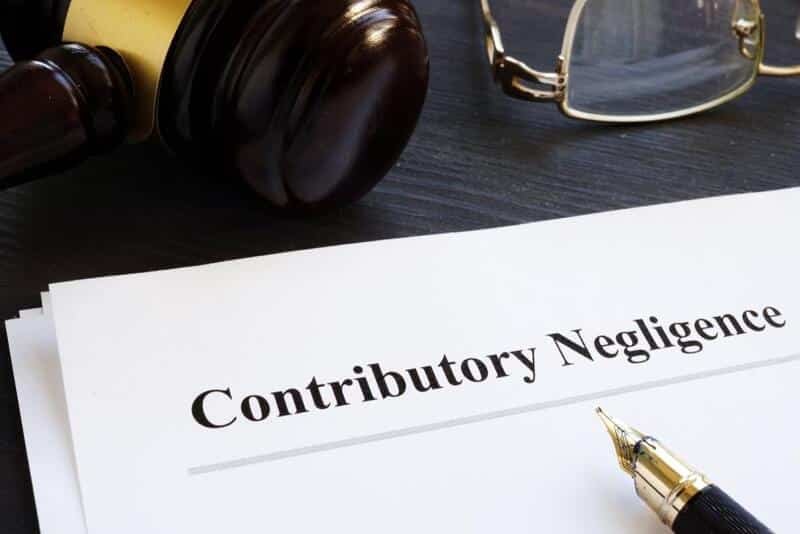Contributory Negligence In Maryland

You are involved in a Baltimore area car accident and believe it is not your fault. You believe you can handle this matter with the insurance company on your own because you claim the accident was the other driver’s fault. However, the other driver claims the accident was your fault. Think again about handling the claim on your own. Maryland is one of four states that has the harsh contributory negligence rule, which makes it extremely difficult for people to recover compensation from a car accident without the assistance of a lawyer.
What is the contributory negligence rule?
The contributory negligence rule states that if you are even 1% at fault in a car accident, you cannot recover anything. This is harsh – many other states have rules that allow you to recover even if you are found to be partially at fault. It is critical to understand that when you present a he-said-she-said case in court (your version of how the accident happened versus the other driver’s version of how the accident happened), you will almost always lose due to the contributory negligence rule.
Contributory Negligence vs. Comparative Negligence
The facts of an accident are not always black and white. In many accident cases, all the parties involved share some percentage of the blame for what happened.
You may figure that sharing blame for an accident is no big deal as long as the court understands who is mostly at fault. However, that is not always the case. Sharing a percentage of blame for an accident could be a trivial fact or the reason why you lost out on compensation. That depends on whether your state follows the principle of contributory negligence or comparative negligence.
Contributory Negligence
In states that follow contributory negligence, plaintiffs are barred from recovering damages if they share even 1% of the blame for their respective accidents. That 1% is not a typo. Being assigned that small sliver of accountability is enough to disqualify you from compensation.
Comparative Negligence
Comparative negligence is considerably more forgiving to plaintiffs in personal injury cases. With this rule in effect, a plaintiff can recover compensation even if they accept partial blame for an accident. However, the plaintiff’s compensation will be reduced based on the percentage of blame assigned to them.
There are also different versions of comparative negligence followed throughout the United States.
Some states follow the pure comparative negligence rule that allows a plaintiff to recoup damages even if they are 99% to blame for the accident. The modified comparative negligence has become more prevalent. According to this rule, a plaintiff can recover damages if they do not share more than 50 or 51% of the blame. Whether the limit is at 50 or 51% varies from state to state.
Examples of Contributory Negligence
Contributory negligence can be a deciding factor in various cases. Let’s highlight some instances where it could come into play in this section of the article.
Example 1: Nightclub Incident
After downing a few too many drinks at the club, you got rowdy and started messing around with the other patrons. Your friends told you to stop because the other patrons were visibly irritated, but you did not notice any issues because you were intoxicated.
A bit later into the night, one of the patrons you harassed punches you. The nightclub’s security saw them but could not act in time.
You could file a negligent security claim against the nightclub owner for hiring unqualified security personnel, but they could offer a rebuttal. The nightclub owner may point out that you were only attacked because of your belligerent behavior.
Example 2: Motorcycle Accident Involving Lane Splitting
With traffic slowing down to a crawl during your drive home, you decide to use your motorcycle to squeeze between the lanes of cars in front of you. The drivers around you are using their horns to voice their disapproval, but you continue to engage in lane splitting.
Suddenly, a driver hits your motorcycle, causing it to fall over. Your motorcycle sustains significant damage, and you decide to sue.
As your lawsuit reaches the court, the defendant may point out that you were lane splitting when the accident occurred. Because lane splitting is illegal in Maryland, contributory negligence may prevent you from receiving compensation.
Why Is Contributory Negligence Important?
States still using contributory negligence is important because that legal doctrine has an outsized impact on personal injury cases.
Defense lawyers know how impactful contributory negligence is, and they can use it to their client’s advantage. They do not necessarily have to come up with evidence proving their client’s innocence. Instead, they can focus on assigning blame to the plaintiff to save their client from a hefty payout.
As the plaintiff, you cannot benefit from contributory negligence. If anything, it may discourage you from pursuing compensation. You may mistakenly believe that you share the blame for what happened, which may prevent you from acting. Contributory negligence can have a chilling effect on lawsuits, allowing negligent parties to get away with their offenses.
Working with an experienced personal injury attorney is always critical. However, their services are even more valuable in states that still adhere to the principle of contributory negligence.
Is This Doctrine Outdated?
Maryland still relies on contributory negligence to decide the outcome of personal injury cases. Only three other states still follow that rule: Alabama, North Carolina, and Virginia. The District of Columbia also continues to abide by that rule.
Considering that 46 other states are now using comparative negligence, it is safe to say that contributory negligence is an outdated principle. Plaintiffs should not be made to suffer because of that rule. Now is as good a time as any for Maryland to move away from contributory negligence.
How You Can Prove You Were Not At-Fault
The best way to win your case is to gather as much evidence that you can to prove that the accident was not your fault. Examples of evidence are:
- Eyewitness statements from the accident
- Police reports and other accident reports
- Recorded statements to insurance companies given by you and the other driver regarding how the accident happened
- Property damage photographs of the motor vehicles involved in the accident
- Video footage of the accident
These materials will assist you in proving that it was the other driver’s fault, with no fault of your own, and that you should be compensated.
Schedule for a Free Consultation to Discuss Your Car Accident Case
You should not go it alone, and instead, retain the services of an experienced Baltimore area car accident attorney. Let Leppler Injury Law fight to get you the compensation you deserve. Call John at (443) 955-1989 for a free consultation and case review.
